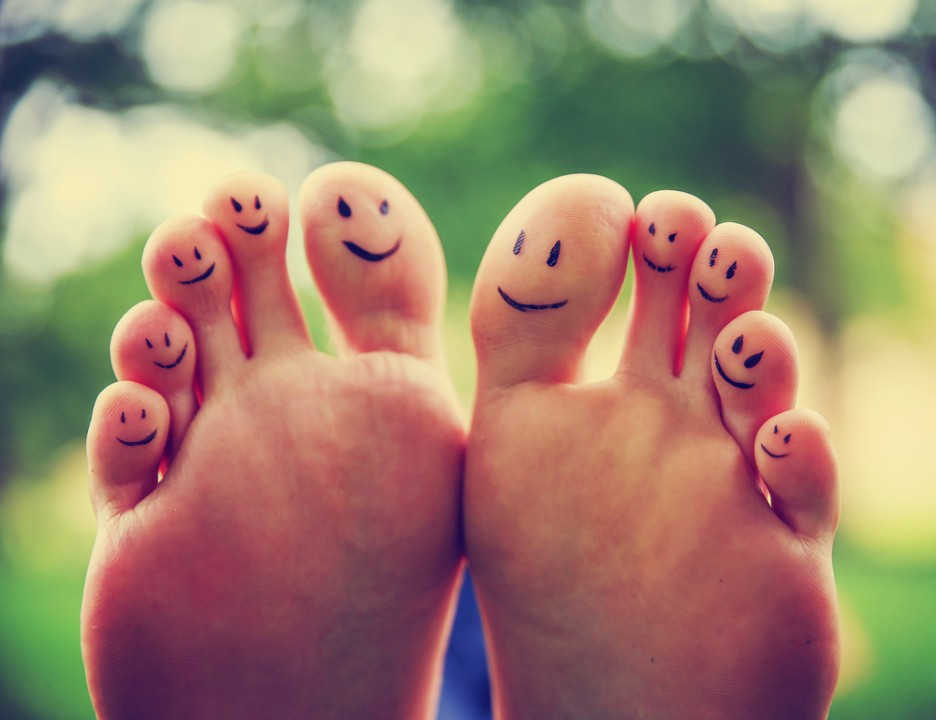Your feet work tirelessly day in and day out. Often times they are one of the most under-appreciated parts of the human body.
Foot Facts
Together your two feet have more than a quarter of the bones in your body – 52 bones, 66 joints, more than 200 muscles, tendons, and ligaments. An average person living for about 80 years, taking about 8000 to 10000 steps a day, would walk about 2lakh kilometers, i.e. 5X times the equatorial circumference of the earth. The pressure on the feet when walking is about 1.5x the body weight and while running is about 4x to 5x the runner’s body weight.
Gait Cycle
This gait cycle describes the mechanics of the way you walk. It starts when one heel strikes the ground and ends a few seconds later when that same heel hits the ground again. Foot care specialists often analyze a patient’s gait cycle to look for structural and functional problems.
Effects of Aging on the Feet
You can suffer foot pain at any age, but there are natural changes in the foot that come with aging. Whatever foot issues may affect you, it helps to understand the normal changes that occur throughout life.
Birth to age 30
An infant or toddler’s foot has an enviable amount of fat padding underneath it, partly to protect bones that are still forming. Indeed, the bones in a baby’s foot are initially composed of cartilage, the same flexible substance that lines joints and is found in ears and noses. Some of the bones do not completely form until the late teens. As children grow and begin to walk, they develop an arch, and their feet strengthen. Feet are generally strong, supple, and problem-free through the third decade of life. This is why so many people in their 20s are able to dance the night away or run a 10-mile race without physical consequences or regrets.
The 30s and 40s
In your 30s and 40s, your feet undergo a series of negative changes related to aging. Muscles stiffen, while tendons and ligaments become less resilient. You lose some of your natural shock absorptions mechanisms. Although your feet may start to bother you by your mid-30s, it’s generally in the 40s that real problems develop. For some people, this is the time that bunions or hammertoes begin to emerge. Nail fungus becomes more common as a result of age-related changes in the nails.
Age 50 and over
Generally, by this age, you’ve put 100,000 kilometers on your feet. By age 50, 50% of the fatty padding on the soles of your feet is lost, and the shoe size would have to be bigger than the one in the ’20s. Ligaments and tendons would have lost some of their elasticity (which also predisposes them to potentially painful ruptures or microtears). If you’ve given birth, you have another reason for the increase in shoe size: hormones released during pregnancy also cause ligaments to relax.
Menopause, too, can affect foot health. Unless countered by medications or exercise, the loss of estrogen and other hormonal changes generally lead to lower bone density, resulting in osteoporosis if enough bone mass is lost. This condition can raise the risk of stress fractures (hairline breaks) in any of the bones of the foot. Unless treated appropriately, stress fractures can worsen and cause the bones to shift out of place.
Studies evaluating older people who live in a community setting show that 20% to 30% of seniors have chronic foot pain. Causes include bunions, corns, and calluses, along with systemic problems that become more common with age, such as diabetes, obesity, and osteoarthritis.
Nails
Nails and foot skin health are important, too. The skin grows thinner and drier with age; the nails may become thicker or more brittle. If nails are thick and yellow, it may indicate a health problem.
“To him whose feet hurt, everything hurts.” Socrates
Your feet mirror your general health, Over 300 different foot ailments have been listed in the medical books. Three out of four individuals in the US suffer from some kind of a foot ailment in their lifetime, and in 2018 10.2 million people visited a doctor with complaints of foot pain. Any misalignment in the foot would cause aches and pains in the knee, hip, lumbar, thoracic, and cervical (lower and upper back including the neck) regions.
Foot problems are rarely life-threatening, but they are annoying and painful. At times, however, untreated foot problems can have life-altering consequences, especially for people with diabetes. About 30% of people with diabetes will develop, diabetic peripheral neuropathy (DPN), and 19% of the diabetics, will end up with having a Diabetic Foot Ulcer (DFU) India, in some cases, these conditions lead to complications that require amputating a toe or foot. About 100,000 amputations due to diabetes complications are done every year in India.
Things are not soo gloomy! many of these conditions can be prevented or treated with orthotics, therapeutic footwear, medications, and elective and non-elective surgeries. A variety of factors may predispose you to develop problems in the feet, including inherited tendencies and aging, which you cannot control.
But the ‘one’ that you can control is your choice of shoes. Pushing your feet into high heels or narrow shoes or any uncomfortable, worn-out shoe/sandals or chappals can also put undue strain on your feet.

